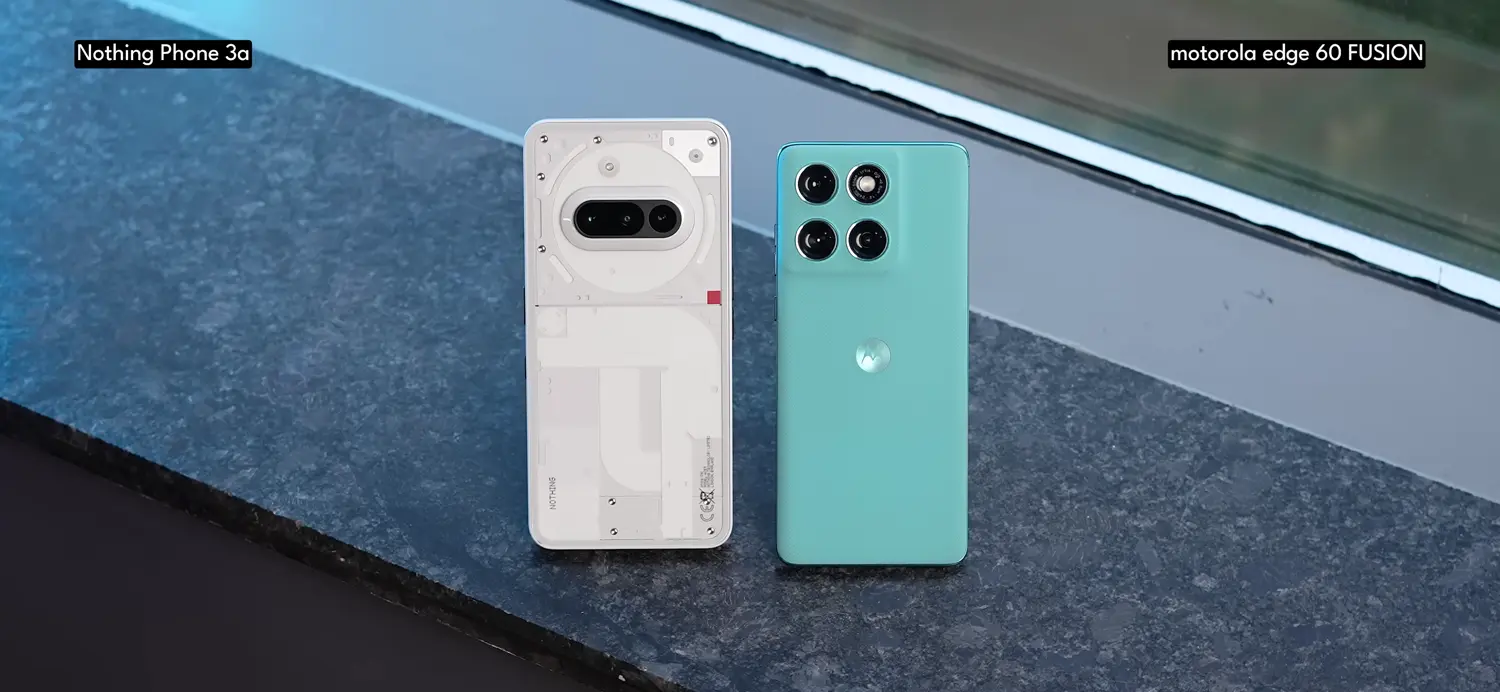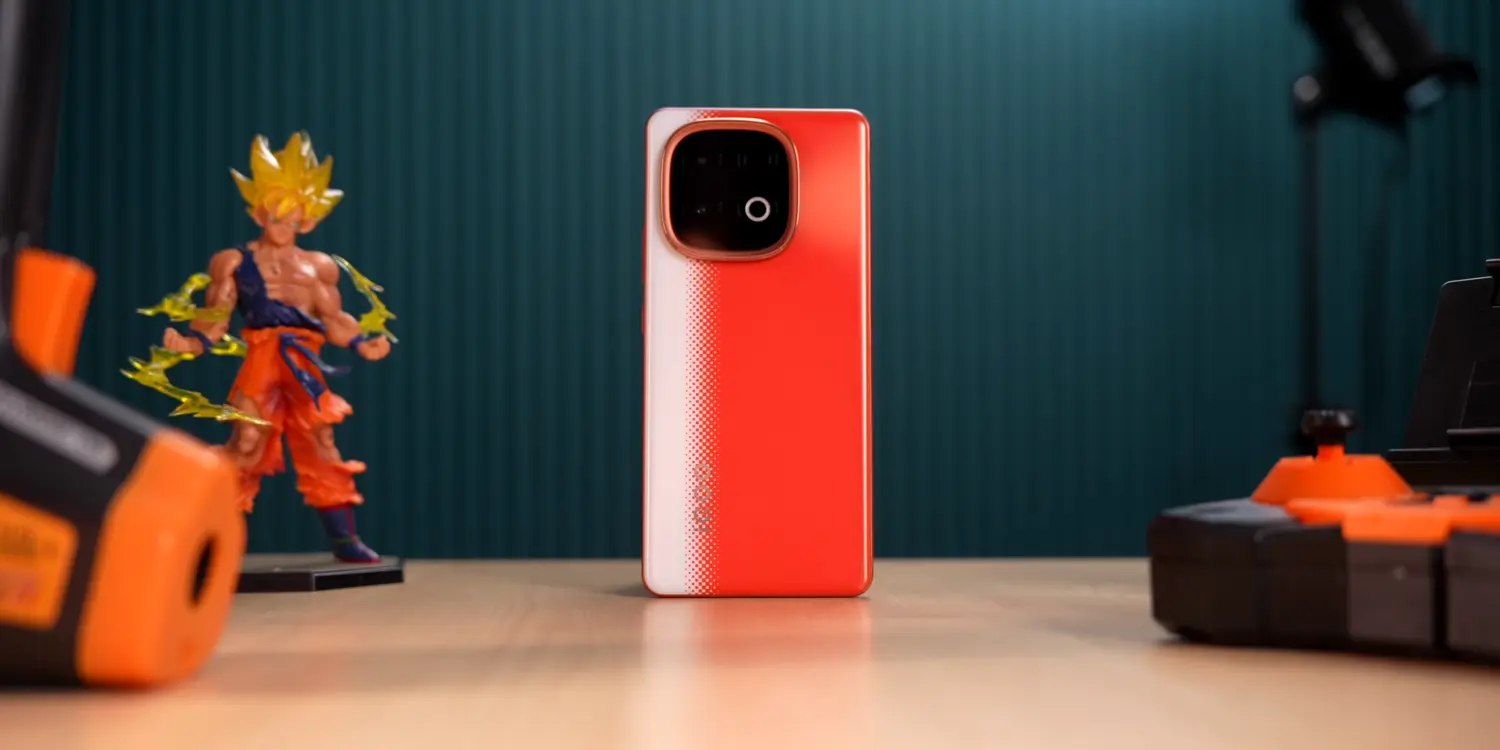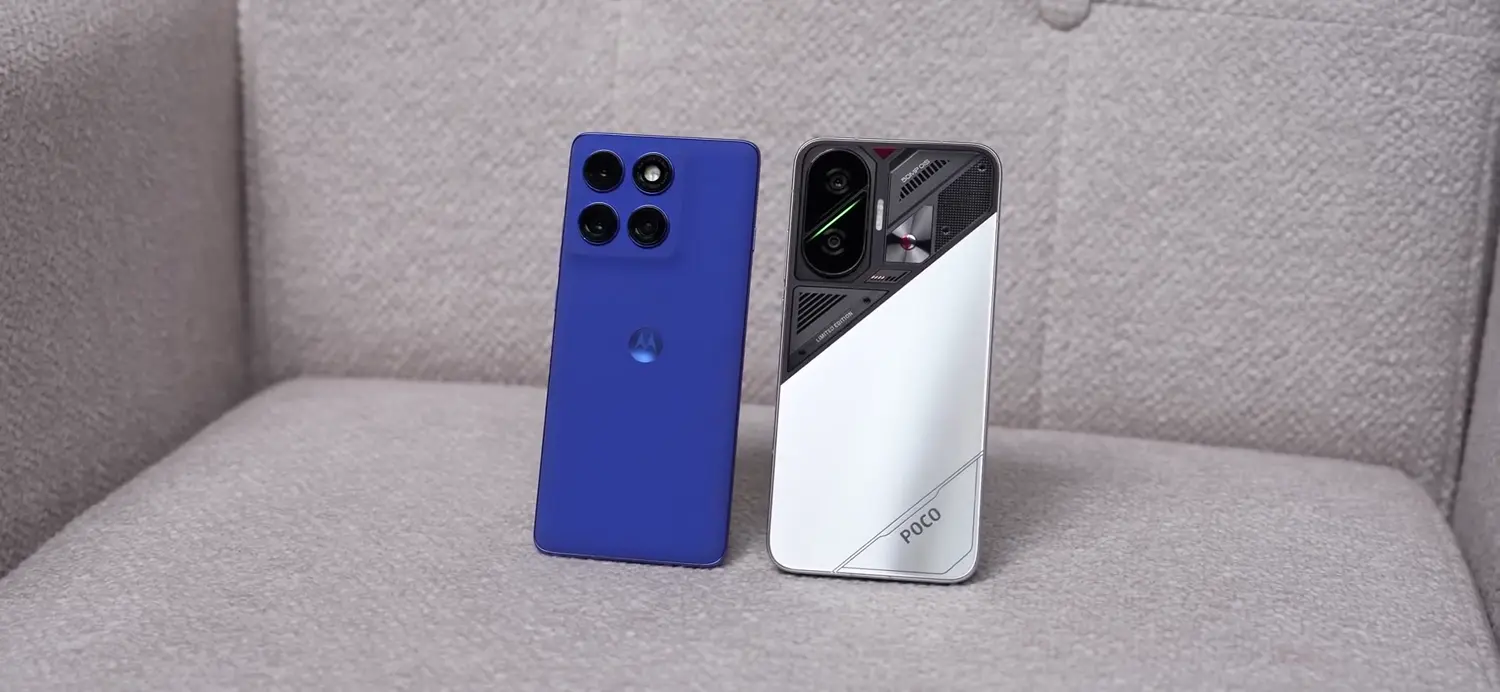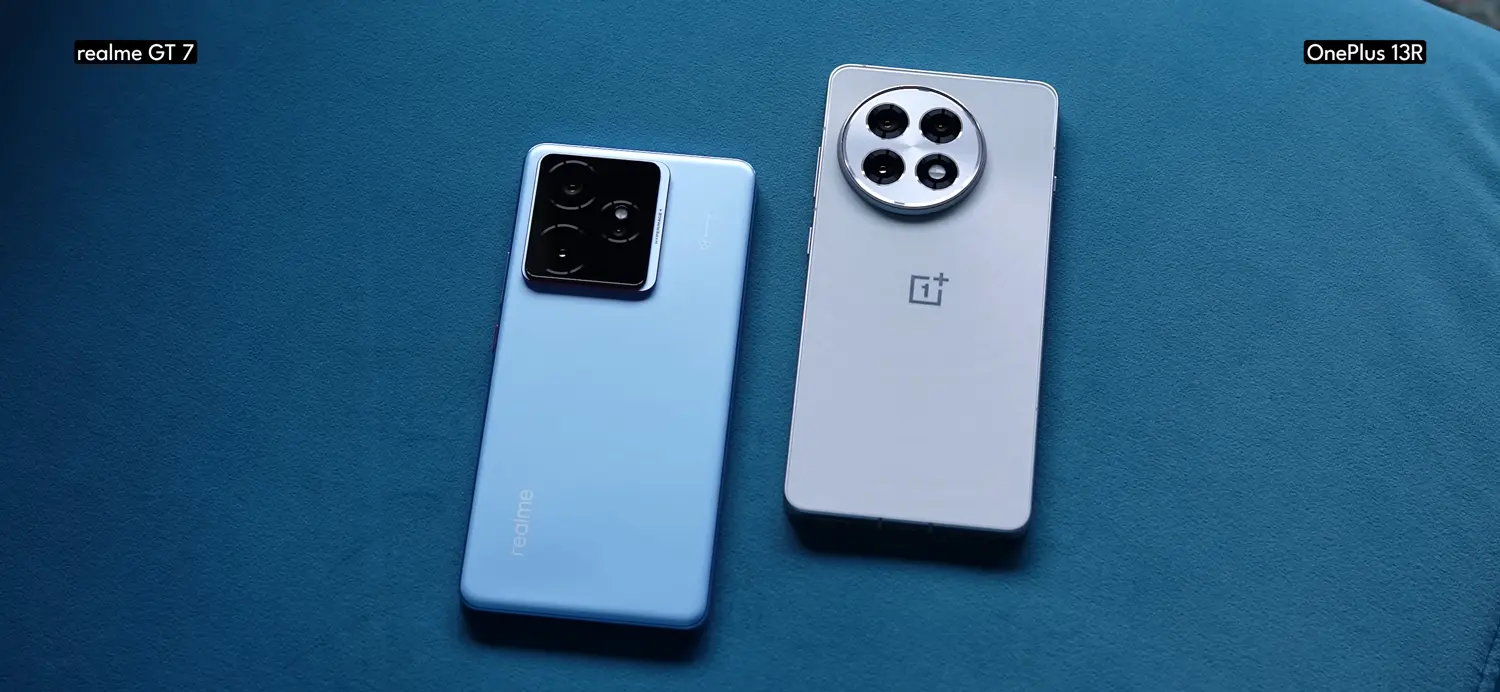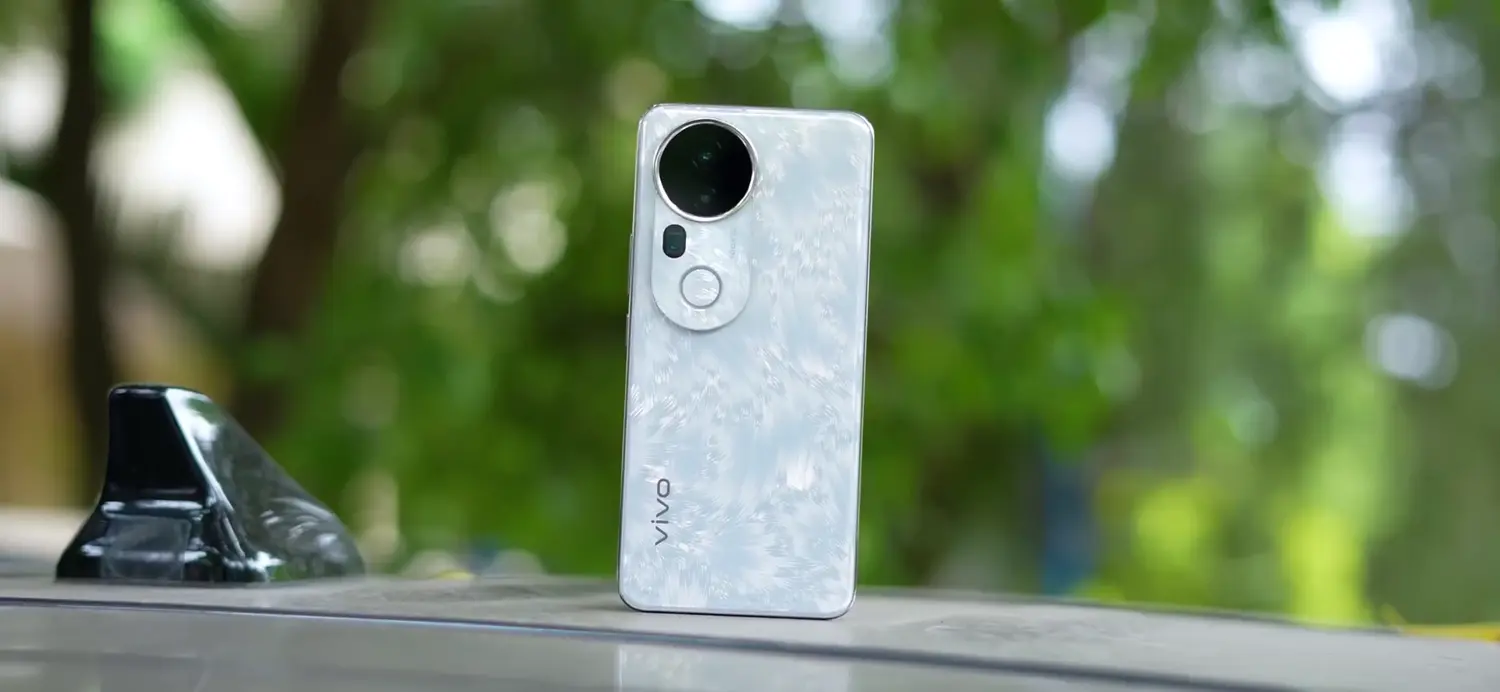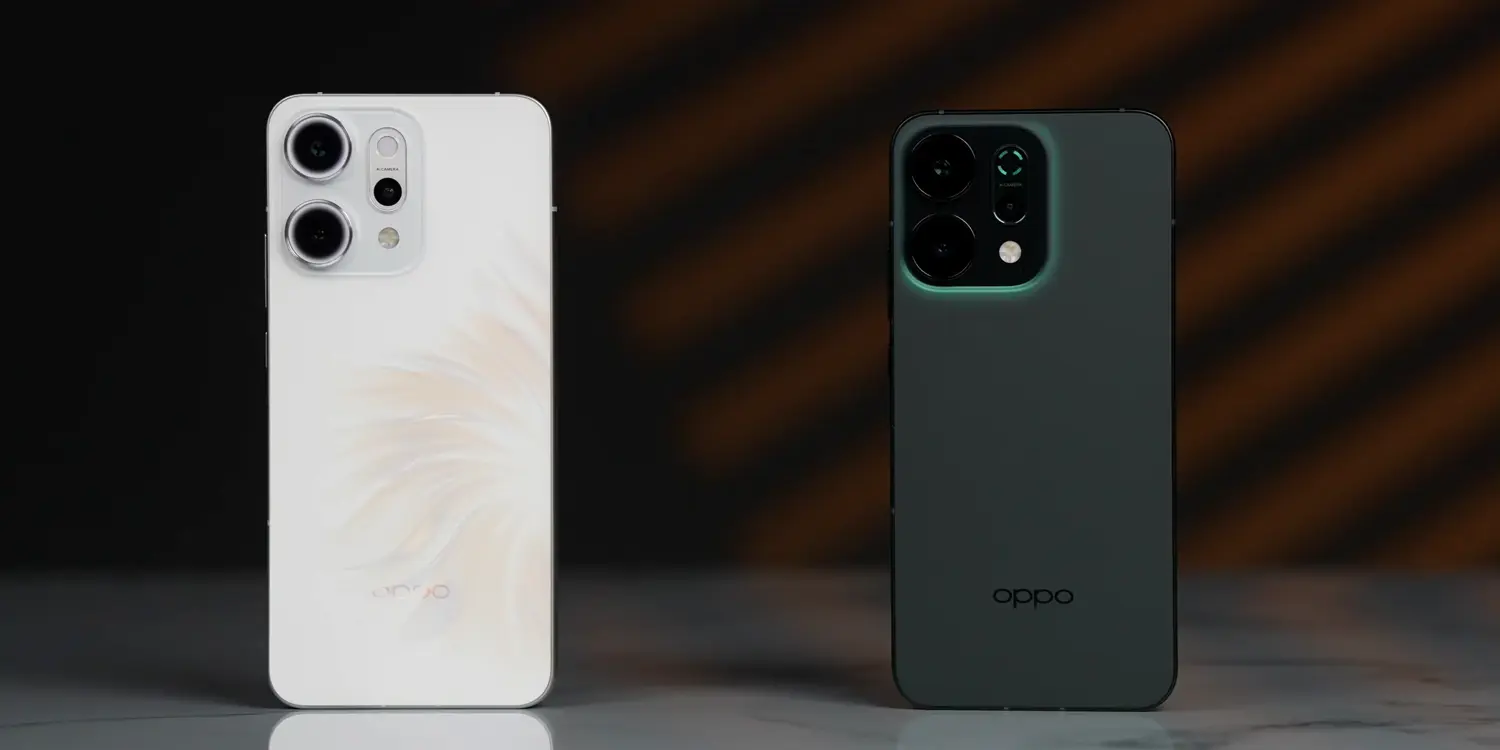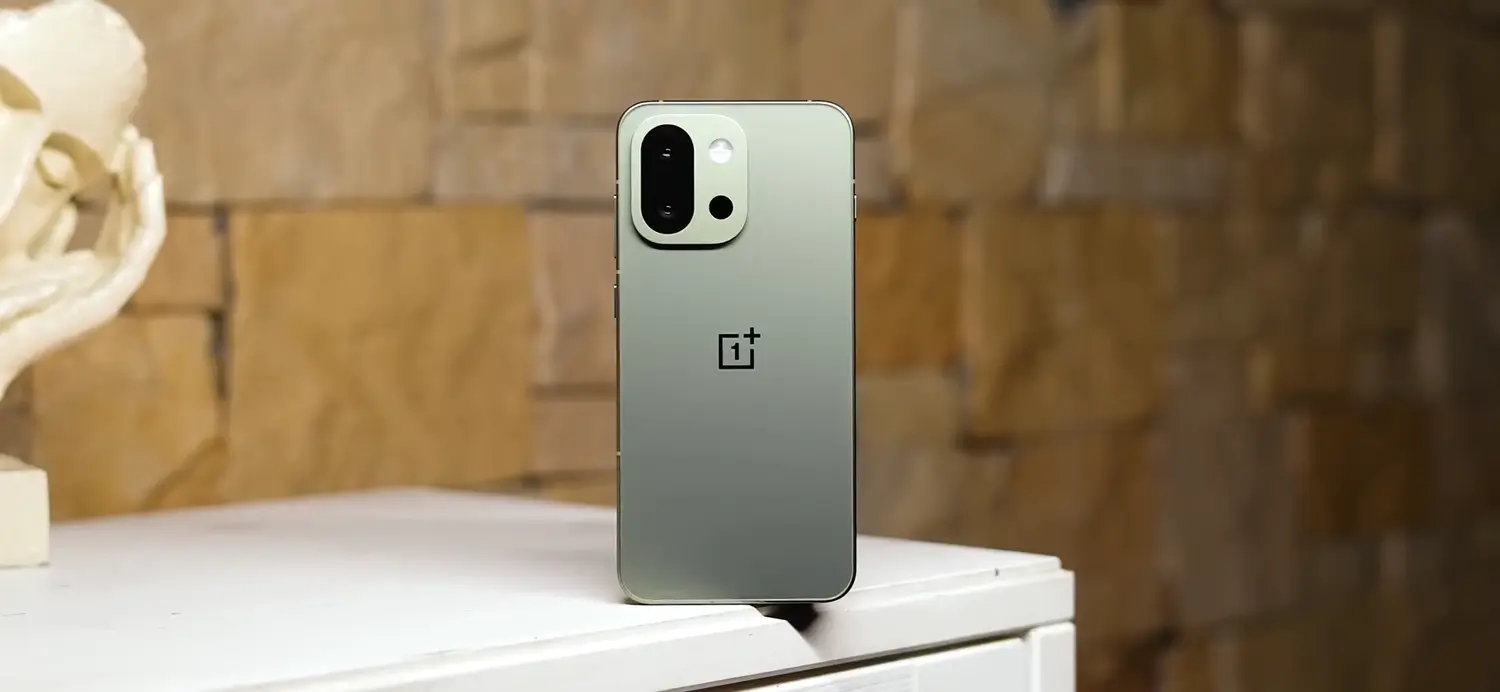The smartphone market in India is buzzing with exciting options, especially in the mid-range segment under ₹25,000. Last year, the Motorola Edge 50 Fusion and Nothing Phone 2a were massive hits, flying off the shelves due to their impressive features and value for money. In 2025, their successors, the Motorola Edge 60 Fusion and Nothing Phone 3a, are here to continue the legacy. Both phones promise premium features, great performance, and attractive designs at budget-friendly prices. But which one should you pick? In this detailed comparison, we’ll break down the design, display, performance, battery, camera, and software to help you decide which phone offers the best value for your money in 2025. By the end, you’ll know whether the Motorola Edge 60 Fusion or Nothing Phone 3a is worth your hard-earned money.
Design and Build Quality
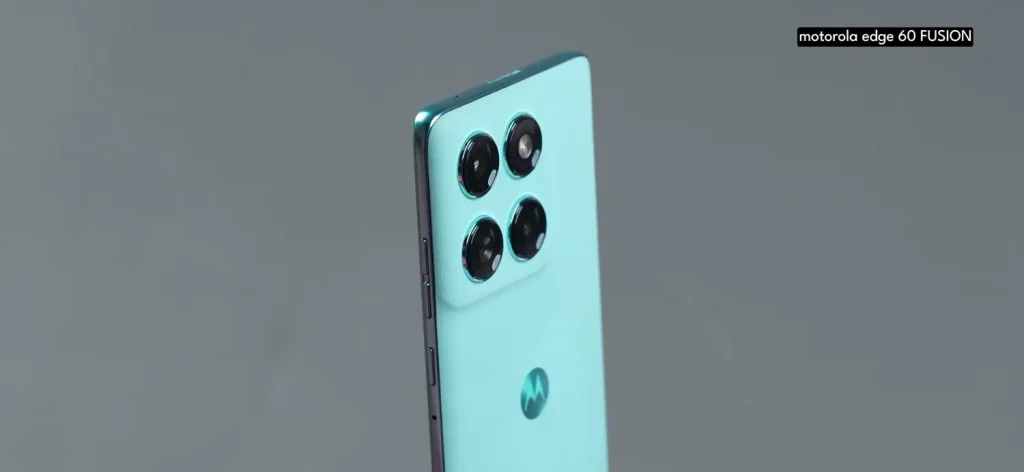
When it comes to design, both the Motorola Edge 60 Fusion and Nothing Phone 3a have their own unique appeal. The Motorola Edge 60 Fusion stands out with a premium look and feel. It features a vegan leather back that gives it a soft, luxurious texture, paired with an aluminium frame for added durability. The phone has an all-curved design, which makes it look sleek and modern. It’s also slim and lightweight, making it comfortable to hold for long periods. The front is protected by Corning Gorilla Glass 7i, an upgrade from the Gorilla Glass 5 seen in previous models, offering better resistance to scratches and drops.
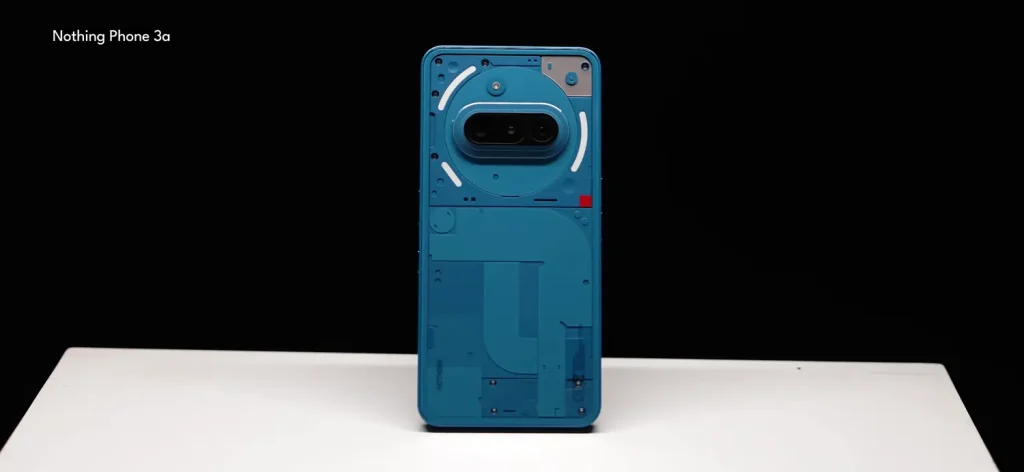
On the other hand, the Nothing Phone 3a takes a bold approach with its transparent glass back and iconic Glyph Interface. The Glyph lighting, which uses LED strips for notifications, calls, and charging indicators, is a unique feature that sets it apart from other phones in this price range. However, the glass back makes it slightly heavier than the Motorola, and it uses Panda Glass for protection, which is decent but not as advanced as Gorilla Glass 7i. The Nothing Phone 3a has a boxy design with flat edges, which some users might prefer for its modern, minimalist vibe.
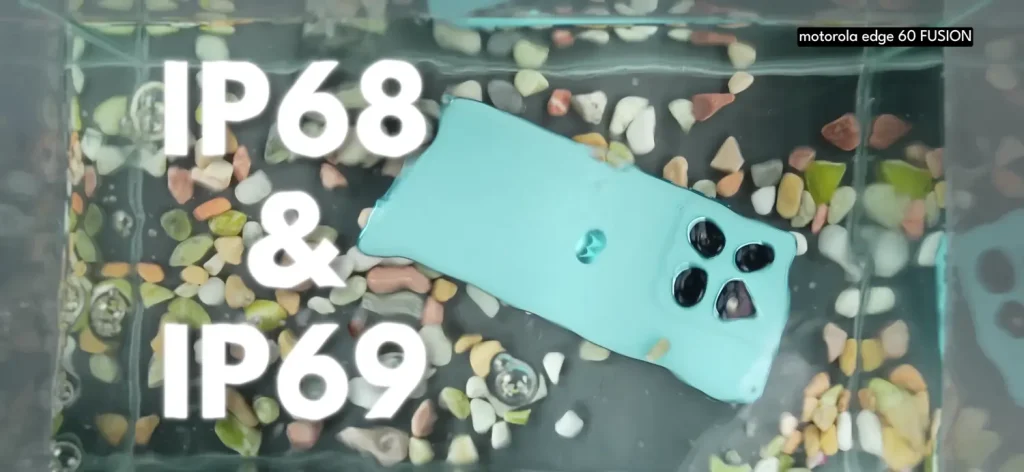
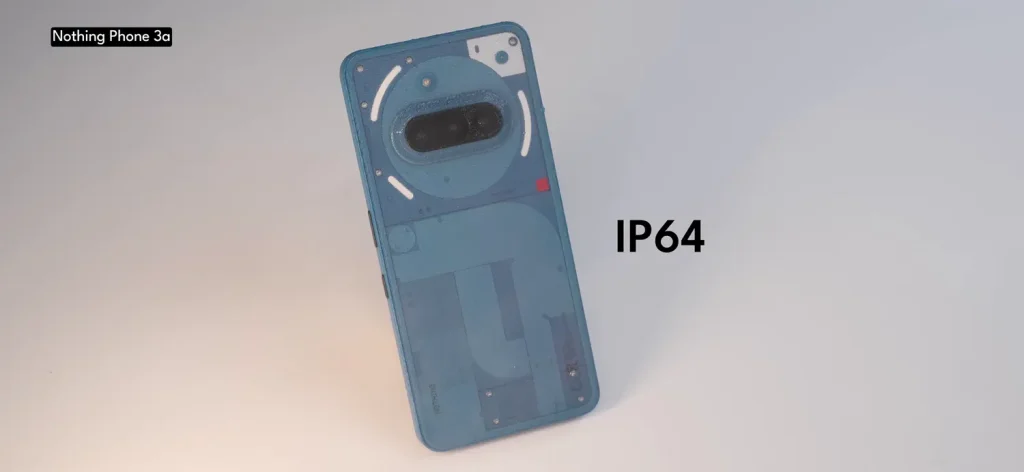
In terms of durability, the Motorola Edge 60 Fusion takes the lead with an IP68 and IP69 rating, meaning it’s highly resistant to dust and water, even under high-pressure conditions. The Nothing Phone 3a, however, comes with an IP64 rating, which offers basic splash resistance but isn’t as robust. Both phones feature a USB-C 2.0 port, which is standard for this price range. The Nothing Phone 3a also includes an Essential Key, a customizable button that can be programmed for quick actions, but it’s still a work in progress and may not be useful for everyone.
Verdict: The Motorola Edge 60 Fusion wins in design due to its premium vegan leather finish, slimmer profile, lighter weight, and superior IP rating. However, if you prefer a unique and flashy design, the Nothing Phone 3a’s Glyph Interface might catch your eye.
Display Quality
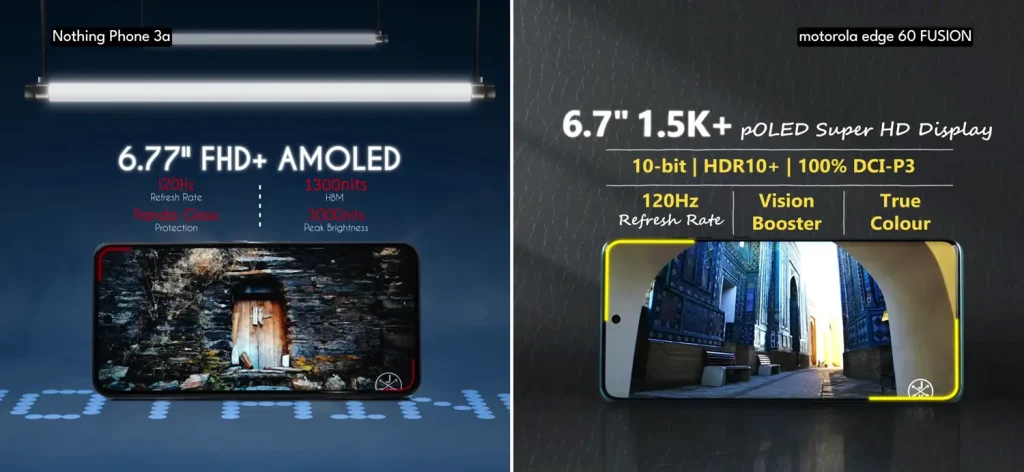
The display is a crucial factor when choosing a smartphone, and both these devices deliver impressive screens. The Motorola Edge 60 Fusion comes with a 6.7-inch pOLED display with a 1.5K resolution and a 120Hz refresh rate. The all-curved design (33.5° at the top and bottom, 45° on the sides) gives it a premium look, though some users might not like curved screens due to accidental touches. Thankfully, Motorola has tuned the palm rejection well, so ghost touches aren’t an issue. The display supports Pantone color validation, ensuring accurate and vibrant colors, and it gets bright enough for outdoor use with excellent HDR performance.
The Nothing Phone 3a features a slightly larger 6.77-inch AMOLED display with a Full HD+ resolution and a 120Hz refresh rate. The flat panel is more practical for most users, as it reduces the chances of accidental touches. It also offers good color accuracy and brightness, but its HDR peak brightness is slightly lower than the Motorola’s, which is noticeable when watching HDR content on platforms like YouTube. Neither phone supports HDR playback on Netflix, so keep that in mind if streaming is a priority.
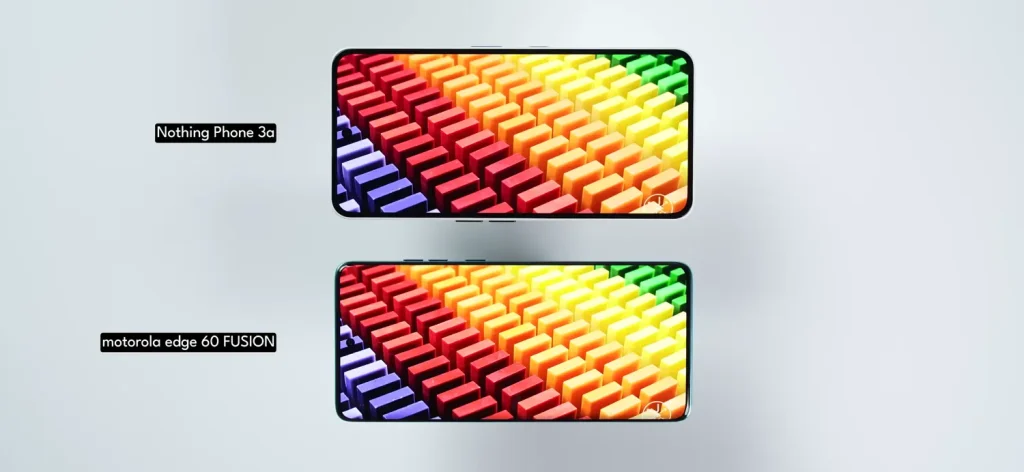
Both displays have optical in-display fingerprint scanners, which are fast and reliable. The haptic feedback is slightly better on the Nothing Phone 3a, but both phones feel premium in this aspect. For audio, both support LHDC and LDAC codecs for high-quality wireless audio, but the Nothing Phone 3a’s stereo speakers are louder, though neither excels in bass response.
Verdict: The Motorola Edge 60 Fusion has a slight edge with its higher resolution and better HDR performance, but the Nothing Phone 3a’s flat display might appeal to those who prioritize practicality. Your choice depends on whether you prefer a curved or flat screen.
Performance and Gaming
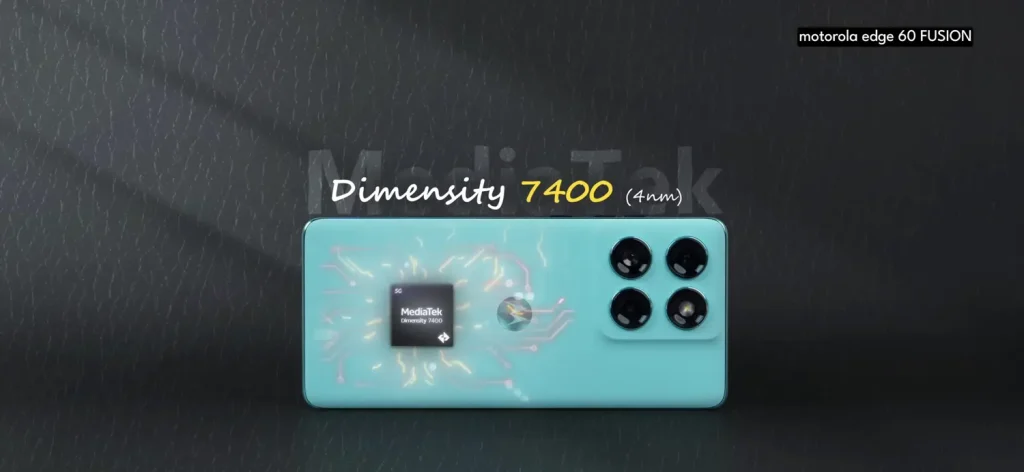
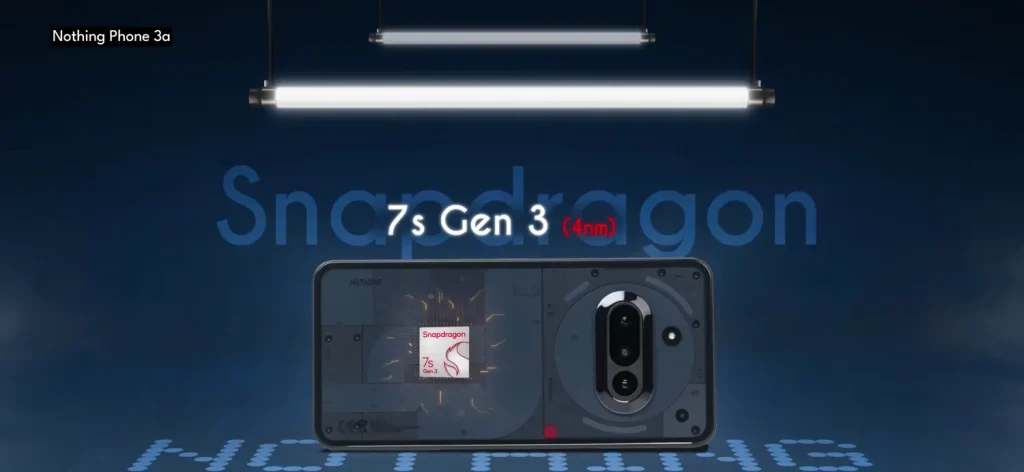
Performance is where these phones start to show their differences. The Motorola Edge 60 Fusion is powered by the MediaTek Dimensity 7400, while the Nothing Phone 3a uses the Qualcomm Snapdragon 7s Gen 3. Both phones come with LPDDR4X RAM and UFS 2.2 storage, but the Motorola offers a 12GB RAM variant and starts with 256GB storage, giving it an advantage over the Nothing Phone 3a, which maxes out at 8GB RAM and 128GB storage in India.
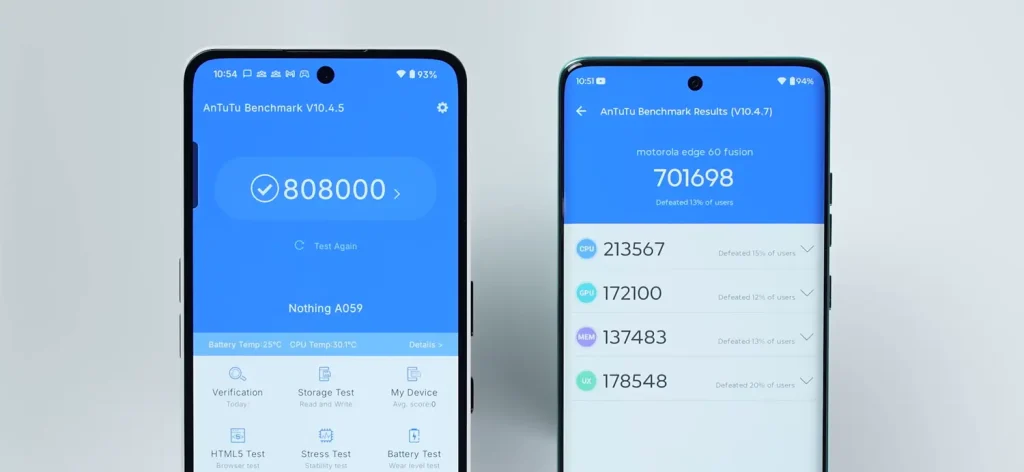
In synthetic benchmarks like AnTuTu and Geekbench, the Motorola Edge 60 Fusion scores higher, and its CPU doesn’t throttle as much under stress. However, the Nothing Phone 3a’s GPU performs better in tests like 3DMark Wildlife, offering higher FPS and better stability for gaming. For example, the Nothing Phone 3a supports 90 FPS in BGMI, while the Motorola is capped at 60 FPS. In games like Genshin Impact, the Nothing Phone 3a delivers smoother performance with higher average FPS. However, the Motorola runs cooler during extended gaming sessions due to better thermal management, as Nothing’s phone tends to heat up slightly.
Both phones handle daily tasks like browsing, social media, and multitasking with ease. They support Wi-Fi 6 and Bluetooth 5.4, but the Nothing Phone 3a has NFC, which is missing on the Motorola—a drawback for users who rely on contactless payments.
Verdict: The Nothing Phone 3a is the better choice for gamers due to its superior GPU performance, but the Motorola Edge 60 Fusion offers better storage options and stays cooler during heavy use.
Battery and Charging
Battery life is a critical factor for most users, and both phones perform well in this area. The Motorola Edge 60 Fusion has a 5,500mAh battery, which is larger than the 5,000mAh battery in the Nothing Phone 3a. Both phones deliver similar battery life, offering 8 to 8.5 hours of screen-on time under normal usage, such as browsing, streaming, and light gaming.
When it comes to charging, the Motorola has a clear advantage. It comes with a 68W GaN charger in the box, which can charge the phone from 0 to 100% in about 50 minutes. This charger is versatile and can even charge other devices like a MacBook Air. The Nothing Phone 3a supports 50W USB PD PPS charging, but you’ll need to buy a compatible charger separately, and it takes around 56 minutes to fully charge. This makes the Motorola more convenient and cost-effective.
Verdict: The Motorola Edge 60 Fusion wins with its larger battery and included fast charger, making it the better option for users who prioritize battery life and charging convenience.
Camera Performance
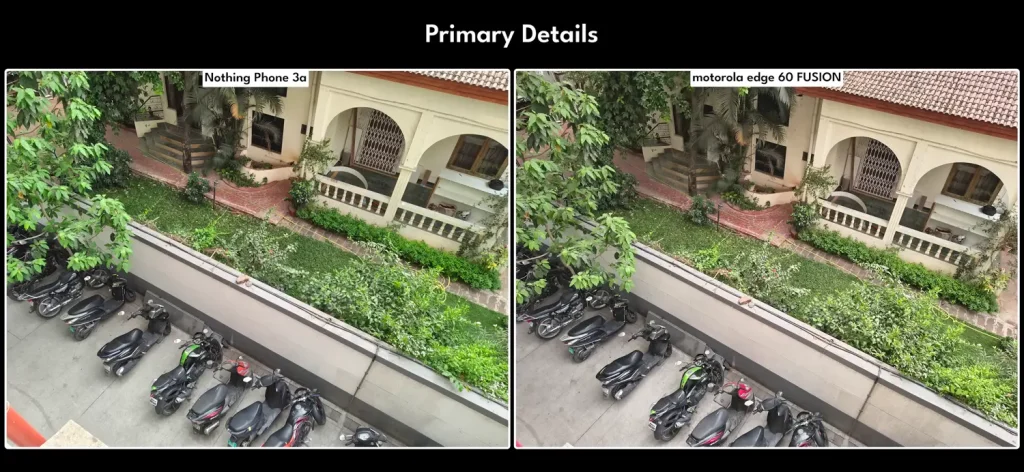
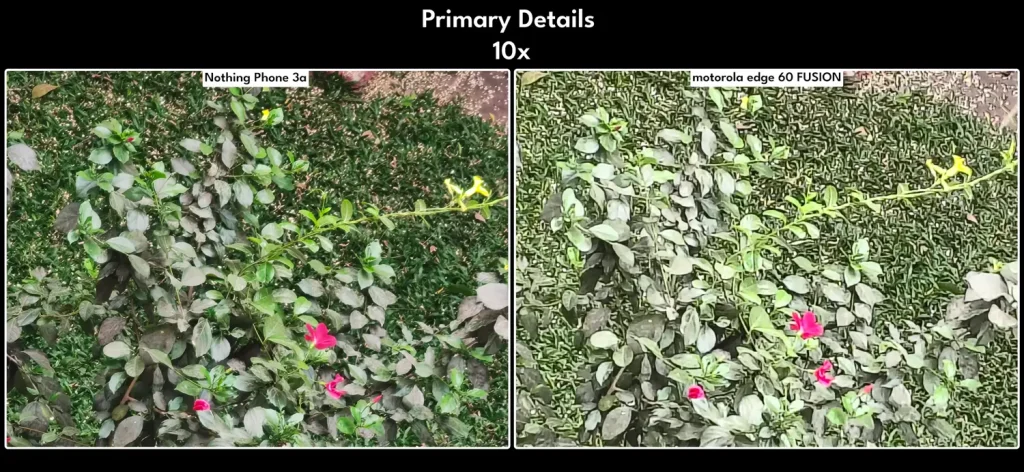
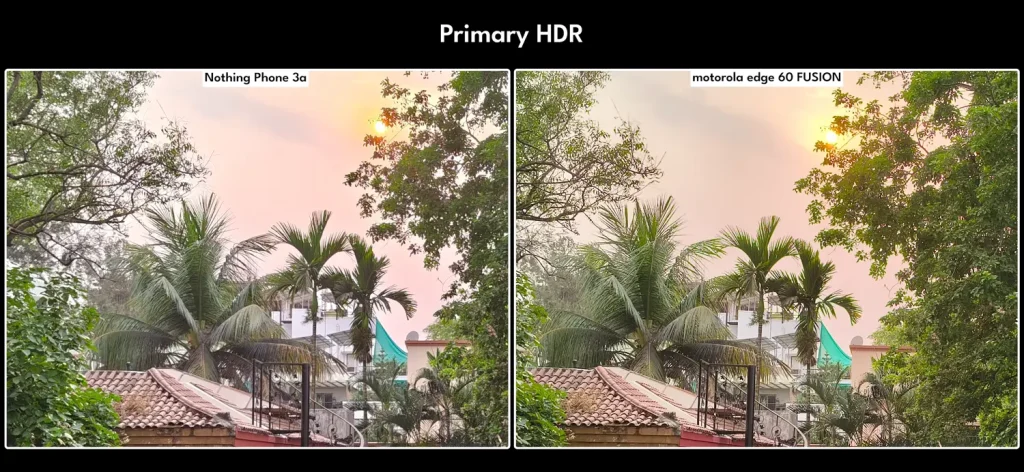
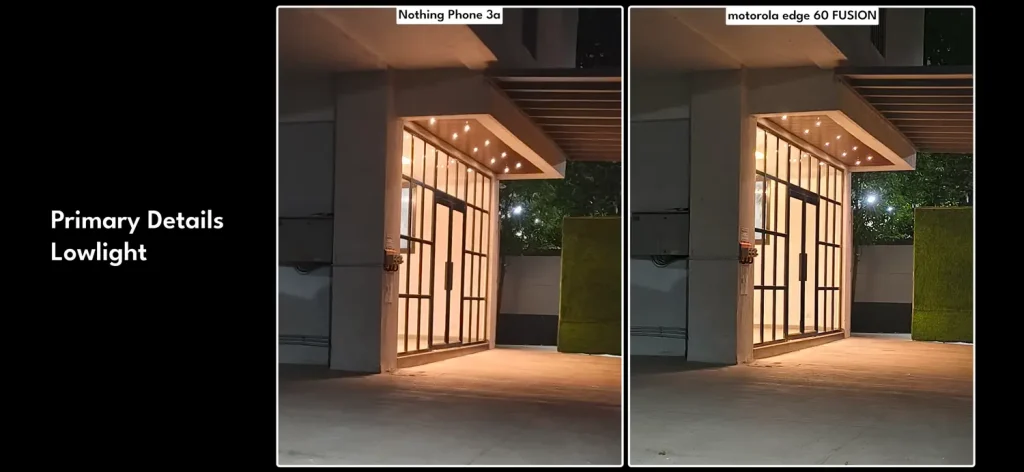
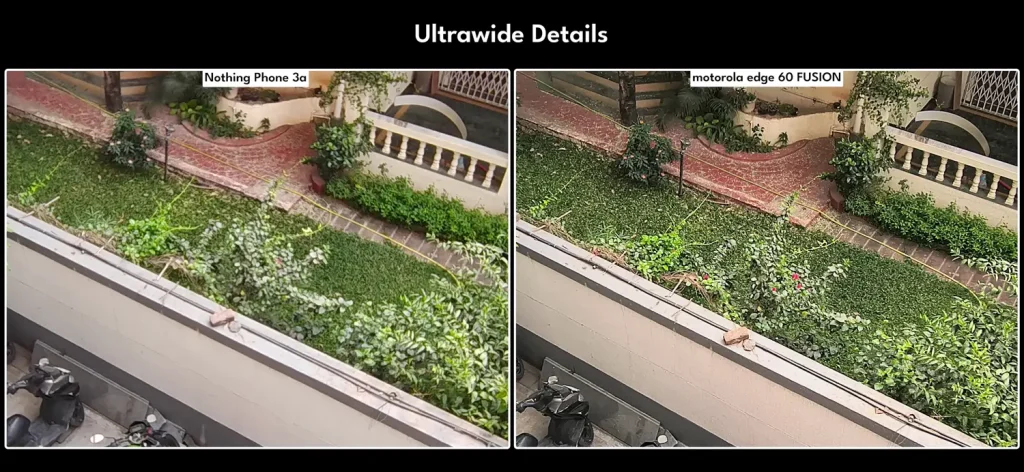
The camera is often a deciding factor for many buyers, and both phones offer solid performance for the price. The Motorola Edge 60 Fusion features a 50MP main camera, a 13MP ultra-wide camera (which doubles as a macro shooter), and a 32MP selfie camera. It also includes a 3-in-1 light sensor for real-time exposure adjustments, especially in low light. The Nothing Phone 3a has a 50MP main camera, a 50MP 2x telephoto camera, an 8MP ultra-wide camera, and a 32MP selfie camera.
In daylight, both phones capture detailed photos, but the Motorola’s algorithm tends to over-sharpen, while the Nothing Phone 3a produces softer details around edges, especially in low light. The Nothing Phone 3a’s 2x telephoto lens is a big advantage, delivering better zoom performance at 2x, 5x, and even 10x compared to the Motorola, which relies on digital zoom. However, the Motorola benefits from a Pantone collaboration, ensuring accurate colors, especially for reds and skin tones, which look more natural compared to the Nothing Phone 3a’s slightly off colors.
For ultra-wide shots, the Motorola’s 13MP sensor outperforms the Nothing’s 8MP sensor, offering sharper images and better low-light performance. The Motorola’s ultra-wide also doubles as a macro camera, which is a nice bonus. In selfies, the Motorola again delivers better skin tone accuracy and low-light performance, while the Nothing Phone 3a excels in portrait mode with more natural edge detection and bokeh.
For video, both phones support 4K 30 FPS recording on the main camera, but the Motorola Edge 60 Fusion has better detail, HDR, and stabilization. Its ultra-wide and selfie cameras also support 4K 30 FPS, while the Nothing Phone 3a is limited to 1080p 30 FPS for the ultra-wide and 1080p 60 FPS for the selfie camera. However, the Nothing Phone 3a records slightly better audio.
Verdict: The Motorola Edge 60 Fusion offers a more refined overall camera experience, especially for ultra-wide shots, selfies, and videos. The Nothing Phone 3a is better for zoom and portrait photography.
Software Experience
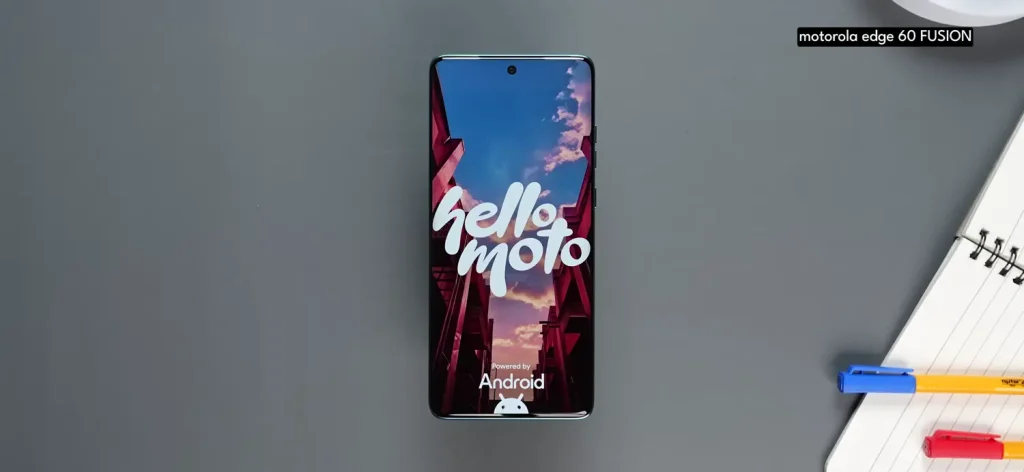
Software plays a big role in the overall user experience. The Motorola Edge 60 Fusion runs on Hello UI, while the Nothing Phone 3a uses Nothing OS 3.1. Both offer a clean, bloatware-free experience and promise three years of software updates. The Nothing Phone 3a also commits to more frequent security updates, which is a plus.
Motorola’s Hello UI includes features like Moto Gestures, Ready For, and Family Spaces, along with new Moto AI capabilities. The Moto AI Prompt Bar, activated by double-tapping the power button, offers features like Catch Me Up (notification summary), Take Notes (voice transcription), Remember This (photo-based memory recall), and Magic Canvas (AI-generated photos and wallpapers). These add practical value, though some features are still evolving.
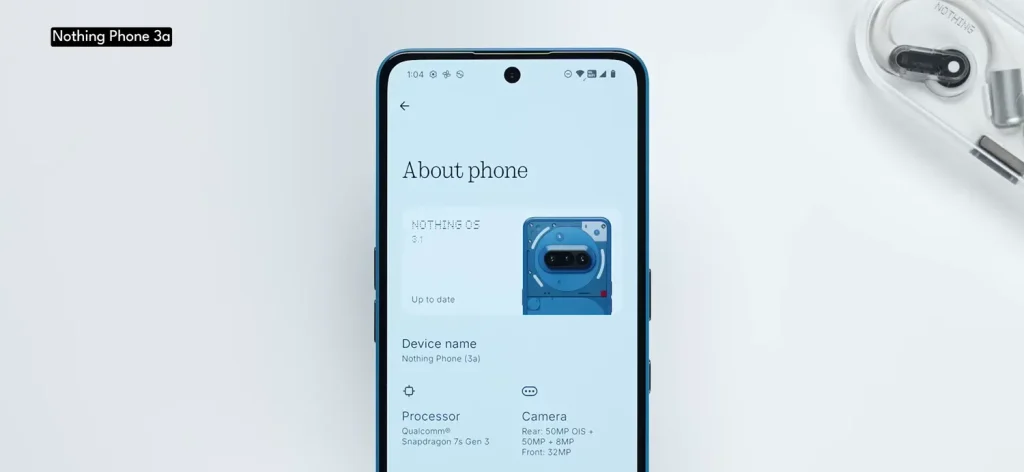
Nothing OS 3.1 is known for its sleek design and unique widgets, including quick settings widgets that make the interface feel modern and cohesive. The Essential Key is similar to Motorola’s AI features, allowing users to record and save memories, but it’s less polished. Nothing OS feels slightly smoother with fewer stutters compared to Hello UI, which can occasionally lag.
Verdict: Motorola offers more features with Moto AI, but Nothing OS 3.1 provides a more polished and visually appealing experience.
Specification Comparison Table
| Feature | Motorola Edge 60 Fusion | Nothing Phone 3a |
|---|---|---|
| Display | 6.7-inch pOLED, 1.5K resolution, 120Hz refresh rate, Curved (33.5° top/bottom, 45° sides), Pantone validated | 6.77-inch AMOLED, Full HD+ resolution, 120Hz refresh rate, Flat |
| Processor | MediaTek Dimensity 7400 | Qualcomm Snapdragon 7s Gen 3 |
| RAM/Storage | 8GB/256GB, 12GB/256GB (LPDDR4X RAM, UFS 2.2 storage) | 8GB/128GB (LPDDR4X RAM, UFS 2.2 storage) |
| Main Camera | 50MP with 3-in-1 light sensor | 50MP |
| Ultra-Wide Camera | 13MP (doubles as macro) | 8MP |
| Telephoto Camera | None | 50MP (2x zoom) |
| Selfie Camera | 32MP | 32MP |
| Video Recording | 4K 30 FPS (main, ultra-wide, selfie) | 4K 30 FPS (main), 1080p 30 FPS (ultra-wide), 1080p 60 FPS (selfie) |
| Battery | 5,500mAh, 68W fast charging (68W GaN charger included) | 5,000mAh, 50W USB PD PPS charging (charger not included) |
| Software | Hello UI, 3 years of software updates | Nothing OS 3.1, 3 years of software updates |
| IP Rating | IP68 and IP69 | IP64 |
| Connectivity | Wi-Fi 6, Bluetooth 5.4 | Wi-Fi 6, Bluetooth 5.4, NFC |
| Build | Vegan leather back, Gorilla Glass 7i | Transparent glass back, Panda Glass |
| Weight | Lighter, slimmer design | Heavier due to glass back |
| Price (Starting) | ₹23,499 | ₹24,999 |
Should You Buy the Motorola Edge 60 Fusion or Nothing Phone 3a?
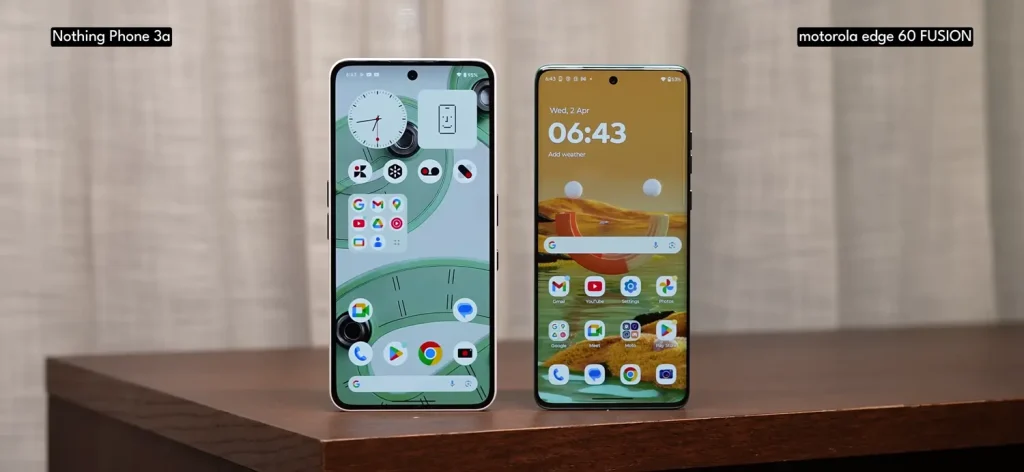
Both the Motorola Edge 60 Fusion and Nothing Phone 3a are excellent choices under ₹25,000, but they cater to slightly different needs. The Motorola Edge 60 Fusion is the better all-rounder, offering a premium design, superior IP rating, a larger battery with a charger included, and a more refined camera system for most scenarios. Its higher storage options and cooler performance during heavy use make it a great value-for-money option. If you prioritize durability, battery life, and camera versatility, the Motorola is the way to go.
The Nothing Phone 3a shines for gamers and those who want a unique design. Its Snapdragon 7s Gen 3 chipset delivers better gaming performance, and the Glyph Interface adds a fun, modern touch. The software experience is slightly smoother, and the telephoto camera is a big plus for zoom and portrait photography. If gaming and a distinctive design are your priorities, the Nothing Phone 3a is worth considering.
Final Recommendation: For most users, the Motorola Edge 60 Fusion offers better value due to its well-rounded features, included charger, and competitive pricing (₹23,499 vs ₹24,999 for the Nothing Phone 3a). However, if you’re a gamer or love Nothing’s unique aesthetic, the Nothing Phone 3a is a strong contender. Ultimately, your choice depends on whether you value design and camera refinement (Motorola) or gaming performance and a standout look (Nothing).
Is It Worth It?
Both phones are worth their price tags in 2025, especially given their premium features in the sub-₹25,000 segment. The Motorola Edge 60 Fusion feels like a steal with its high-end design, large battery, and versatile cameras, making it ideal for students, professionals, or anyone looking for a reliable daily driver. The Nothing Phone 3a, with its gaming prowess and unique design, is perfect for younger users who want a phone that stands out and handles intensive tasks like gaming or multitasking.
Before buying, consider your priorities:
- Choose Motorola Edge 60 Fusion if you want a premium design, better durability, a larger battery, and a well-rounded camera.
- Choose Nothing Phone 3a if you prioritize gaming, a unique transparent design, and a smoother software experience.
Both phones are likely to be best-sellers in 2025, just like their predecessors. Whichever you pick, you’re getting a fantastic smartphone that delivers excellent value for money.
